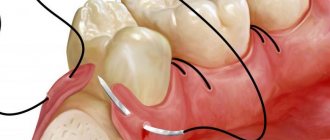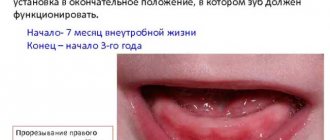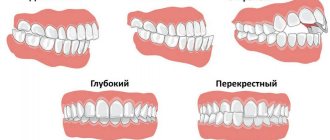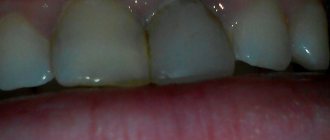Milium (horny cyst, whitehead, “millet”) is an epidermal cystic formation at the mouth of the hair follicle, looking like a small white grain. Typically, milia are localized on the face in areas with relatively thin skin, very rarely on the body, and exist for a long period without any changes. Milia are a fairly common cosmetic problem and can occur at any age. Whiteheads appear especially often during puberty; also often found in newborn babies (neonatal acne). Female representatives are more susceptible to the appearance of milia.
Causes
Milia occur in patients with a thick form of oily seborrhea, characterized by hyperfunction of the sebaceous glands and changes in the chemical composition of sebum and creating a favorable background for the development of acne.
There are closed comedones - whiteheads (milia) and open comedones - blackheads (blackheads). Thick seborrhea is also characterized by the appearance of deep cysts of the sebaceous glands - atheromas and acne vulgaris. Milia have the appearance of small rounded dense nodules of a white-yellowish hue, 0.5-3 mm in size with clear boundaries, protruding above the surface of the skin and resembling millet grains (popular name - “millet”). Milium is characterized by an uninflamed head, since the whitehead does not have a natural outlet and contact with the environment. Milia do not change in size for a long time. When microorganisms enter the milium, inflammation may develop with the formation of an abscess. Milia (milia) can often be found on the wings of the nose in recently born babies; they are considered borderline conditions in newborns and soon disappear spontaneously without any treatment.
Milia are recognized based on an examination of the skin by a dermatologist-cosmetologist based on characteristic external signs.
Description of the disease
Atheroma is one of the relatively harmless tumors due to the fact that it does not transform into a malignant neoplasm.
However, there is a risk of significant increase in size, so medical attention is required in all cases. Teenage children are more likely to experience this problem. Boys and girls get sick about the same. The main reason why parents first turn to a surgeon is the presence of a visually noticeable tumor.
The atheroma itself is a small capsule filled with pasty contents. It is sebum, which, due to blockage of one or more glands, did not come out, but remained in the subcutaneous tissue.
Treatment of milia
Milia do not go away on their own; it is almost impossible to get rid of them with the help of cosmetics. Under no circumstances should you squeeze out milia yourself, as this will damage the hair follicle and sebaceous gland. Such self-medication often leads to the subsequent formation of a larger acne or the addition of an infection, which can cause the formation of a rough scar.
Treatment of milia is carried out by a dermatologist and consists of opening and removing the cyst capsule with its contents. The choice of removal method depends on the location, number, size and depth of the milia. For single milia, mechanical removal is carried out (using a sterile needle and curettage) with preliminary and subsequent antiseptic treatment of the skin. Small wounds left after such a procedure heal on their own without leaving a trace.
For multiple whiteheads, modern methods are used - removal of milia with a laser, radio wave method or electrocoagulation. The crusts formed at the cauterization site disappear on their own within 10-14 days. Removing more than 10 elements at one time is not recommended to avoid significant trauma to the skin and disruption of the sebaceous glands.
Diagnosis of atheroma in children
It is relatively easy to identify atheroma.
Even at the stage of the initial conversation with the patient or his parents, the surgeon assesses the general well-being of the child, collects anamnesis and analyzes complaints. When examining a neoplasm, the doctor pays attention to its size, location, pain, and the presence of redness. Before surgery, the surgeon prescribes a number of tests to comprehensively assess the child’s condition:
- general and biochemical blood test;
- general urine analysis;
- blood test for infections (HIV, syphilis, viral hepatitis B, C);
- ECG, fluorography.
The child is also examined by an anesthesiologist and pediatrician before the operation. A mandatory diagnostic method is histological examination of tumor tissue after its removal. At this stage, it is possible to determine whether it was an atheroma or a lipoma (a tumor similar in appearance).
Prevention of milia
To prevent the appearance of milia, careful facial skin care is required using cleansers and moisturizers appropriate to the skin type, scrubs, peels, cosmetic masks that normalize the activity of the sebaceous glands; elimination of provoking factors, proper and rational nutrition, healthy lifestyle. Salon cosmetic procedures, including mechanical, ultrasonic, vacuum facial cleansing, peelings (chemical, mechanical - microdermabrasion), laser resurfacing, are quite effective in preventing the appearance of milia.
Neonatal mastitis
Mastitis is an acute or chronic inflammation of the mammary gland. It is usually customary to talk about mastitis in a woman who is breastfeeding, but children also have mastitis , especially in the newborn period, when the baby experiences a sexual crisis with swelling of the glands and parents try to “treat” this crisis with various warm-ups, ointments, tinctures and squeezing out milk. from pieces of iron. Usually, all these attempts lead the child and his parents to the surgeon, at best for an appointment, at worst - to the operating table with a purulent abscess.
Mastitis can also develop due to defects in care, when prickly heat with pustules appears on the skin, the baby is rarely washed or his immunity is reduced and the infection penetrates through the nipple area when they are injured.
Types and features of localization of papillomas in children
Parents are often frightened by the variety of shapes and colors of epidermal growths on the child’s skin. This is due to the fact that medicine has identified about 120 different strains of HPV, each of which is manifested by specific visual characteristics and localization on the body. Children most often encounter the following types of papillomavirus:
- Ordinary papillomas - appear in the form of small oval or spherical bumps on the skin (warts) that can have different colors. Ordinary papillomas are most often localized on the hands (back of the hand), on the scalp and buttocks, but can appear in almost any area of the epidermis.
- Flat papillomas - the second name for this type of neoplasm - juvenile warts, however, quite often small small papules the color of healthy skin appear in infants. Most often, such papillomas are localized in a child’s face, head and hands.
- Papilloma of the throat - especially often manifests itself as a consequence of infection of the baby during childbirth and can be accompanied by a change in voice and difficulty breathing. Papilloma on the tonsil in a child can manifest itself for a long time as unexplained discomfort in the neck area.
- Plantar papillomas - form as single warts on the foot and can cause pain when walking and especially running. Such structures can result from damage to the skin of the foot and prolonged wearing of compressive or, on the contrary, too large shoes.
- Thread-like papillomas are round or oblong formations that usually form in the area of skin folds: (on the neck, in the armpits, in the groin area, on the face in the area of the nasolabial triangle).
- Epithelial hyperplasia is visually diagnosed as excessive growth of mucous membrane tissue, which, like classic neoplasms, is of a viral nature. Hyperplasia can appear as small papillomas on the child’s lip, as well as on the surface of the tongue or palate.
Most types of papillomas that affect children do not exhibit pronounced oncogenicity, that is, they are not inclined to cause an oncological process, however, to clarify the diagnosis, you should still consult a specialist.
Etiology of childhood papillomas
You can become infected with the papilloma virus through several mechanisms, but for children, spread most often occurs during personal tactile contact with a carrier, for example during play, or when using common objects, which is especially typical for places where children gather in large numbers (kindergarten, playground), where Toddlers often exchange toys or have common objects. Another route of infection is transmission of the virus from mother to child perinatally and during childbirth. Passing through the birth canal, the baby can come into contact with papillomas or condylomas of the mother’s internal organs, which is considered a key factor in infection.
As already mentioned, any papilloma is a visual manifestation of the presence of a virus in the body. However, not all HPV carriers experience pathological proliferation of epidermal tissue or mucous membranes. If a person's immune system is sufficiently stable, skin growths may not appear for a long time. The following factors and conditions of the child’s body can provoke tissue proliferation:
- Weakening of the immune system due to vitamin deficiency or illness;
- Traumatic violations of the integrity of the skin: abrasions, scratches, wounds, etc.;
- Poor nutrition;
- Failure to comply with personal hygiene rules;
- Hormonal changes during puberty.
It should be remembered that, according to statistics, nine out of ten people on the planet are carriers of the papilloma virus, which means you should not panic if you notice a small skin growth on a child, which is popularly called a wart.
Staphylococcal infection in children
A staph infection can cause many symptoms. This depends on the location of the infection in the body and the severity of the primary inflammatory focus. Staphylococcal infection in children can be generalized or localized in form.
Most cases are localized mild forms, for example, nasopharyngitis or rhinitis. Minor inflammatory changes are observed, there is no intoxication. In infants, these forms may manifest as poor appetite and insufficient weight gain. Blood cultures can isolate staphylococcus.
But localized forms do not always go away easily; they can be accompanied by severe symptoms, severe intoxication and bacteremia, which is why it may be necessary to differentiate them from sepsis.
The disease can occur in an asymptomatic or erased form. They are not diagnosed, but are dangerous for the child and others, since an infected child spreads the infection. In some cases, another disease is added to the disease, for example, ARVI, which leads to an exacerbation of staphylococcal infection and complications, in some cases very severe.
For staphylococcal infection, the incubation period lasts from 2-3 hours to 3-4 days. The shortest incubation period for the gastroenteroscolitic form of the disease.
Most often, staphylococcal infection in children is localized on the skin and subcutaneous cells. With a skin staphylococcal infection, an inflammatory focus quickly develops with a tendency to suppuration and a reaction of regional lymph nodes such as lymphadenitis and lymphangitis. In children, staphylococcal skin lesions usually take the form of folliculitis, boils, pyoderma, phlegmon, carbuncle, and hidradenitis. Newborns may have Ritter's exfoliative dermatitis, neonatal pemphigus, and vesiculopustulosis. If the infection affects the mucous membranes, symptoms of purulent conjunctivitis and tonsillitis appear.
Staphylococcal tonsillitis in children as an independent disease is a rather rare phenomenon. This usually occurs against the background of acute respiratory viral infection, in some cases due to exacerbation of chronic tonsillitis or as a result of sepsis.
With staphylococcal tonsillitis in children, continuous overlays appear on the palatine tonsils, sometimes they also affect the arches and uvula. In some cases, tonsillitis is follicular. Overlays with staphylococcal tonsillitis in most cases are purulent-necrotic, whitish-yellowish, loose. It is relatively easy to remove them, as well as to grind them between glass slides.
There are extremely rare cases when, due to a staphylococcal infection, the overlays are dense, it is difficult to remove them, and removal causes bleeding of the tonsils. Staphylococcal tonsillitis is characterized by diffuse, bright hyperemia and hyperemia of the mucous membranes of the pharynx without clear boundaries. The child may complain of severe pain when swallowing. The reaction of regional lymph nodes is pronounced. Staphylococcal tonsillitis takes quite a long time to resolve. Symptoms of intoxication and elevated body temperature persist for about 6-7 days. The pharynx is cleared on days 5-7 or on days 8-10. Without laboratory methods, it is impossible to understand that a sore throat is staphylococcal.
Staphylococcal laryngitis and laryngotracheitis are common mainly in children 1-3 years old. They develop against the background of ARVI. The disease is characterized by an acute onset, elevated temperature, and laryngeal stenosis quickly appears. Morphologically, a necrotic or ulcerative-necrotic process in the larynx and trachea is noted. Staphylococcal laryngotracheitis often occurs with obstructive bronchitis and, in rare cases, pneumonia. The symptoms of staphylococcal laryngotracheitis in children are almost no different from laryngotracheitis caused by other bacterial flora. The disease is very different only from diphtheria croup, which develops slowly, with a gradual change of phases, a parallel increase in symptoms (hoarseness, aphonia, dry, rough cough and a gradual increase in stenosis).
Staphylococcal pneumonia is a special form of lung damage with a characteristic tendency to abscess formation. Young children are more susceptible to the disease than others. It begins in most cases during or after ARVI. As an independent disease not accompanied by others, staphylococcal pneumonia is extremely rare.
The disease begins acutely or violently, body temperature is greatly elevated, and severe symptoms of toxicosis are observed. In more rare cases, staphylococcal pneumonia in children may begin gradually, initially followed by minor catarrhal symptoms. But even in these rare cases, the patient’s condition quickly deteriorates sharply, the temperature “jumps” greatly, intoxication intensifies, and respiratory failure increases. The child is lethargic and pale, he is drowsy, does not want to eat, spits up, and often vomits. Shortness of breath, shortening of the percussion sound, a moderate amount of fine moist rales on one side and weakened breathing in the affected area are recorded.
With staphylococcal pneumonia, bullae form in the lungs. These are air cavities, the diameter of which is 1-10 cm. They can be identified by taking an x-ray. Infection of the bulla threatens lung abscess. Breakthrough of a purulent focus leads to purulent pleurisy and pneumothorax. Deaths are common with staphylococcal pneumonia.
, scarlet fever-like syndrome may appear . Most often this happens with staphylococcal infection of a wound or burn surface, lymphadenitis, phlegmon, osteomyelitis.
The disease manifests itself as a scarlet-like rash. It occurs on a hyperemic (reddened) background, is formed from small dots, and is located, as a rule, on the lateral surfaces of the torso. When the rash disappears, abundant lamellar peeling is observed. During this form of the disease, the child’s body temperature is high. The rash appears 2-3 days after the onset of the disease and later.
Lesions of the gastrointestinal tract by staphylococcus can be located in various places (in the stomach, intestines, on the mucous membranes of the mouth, in the biliary system). The severity of such diseases also varies.
Staphylococcal stomatitis mainly affects young children. There is a pronounced hyperemia of the oral mucosa, the appearance of aphthae or ulcers on the mucous membrane of the cheeks, on the tongue, etc.
Staphylococcal gastrointestinal diseases are gastritis, gastroenteritis, enteritis, enterocolitis, which occur when infected through food. In children under 12 months of age, enteritis and enterocolitis often occur as secondary diseases against the background of another staphylococcal disease. If the route of infection is contact, and enteritis or enterocolitis occurs, a small amount of the pathogen is in the body. Staphylococci cause local changes when multiplying in the intestines, as well as general symptoms of intoxication when the toxin enters the blood.
With gastritis or gastroenteritis of staphylococcal nature, the incubation period lasts 2-5 hours, followed by an acute onset of the disease. The most striking symptom is repeated, often uncontrollable vomiting, severe weakness, severe pain in the epigastric region, and dizziness. Most sick children have a fever. The skin is pale and covered with cold sweat, the heart sounds are muffled, the pulse is weak and rapid. In most cases, damage occurs to the small intestine, which leads to bowel dysfunction. Bowel movements occur 4 to 6 times a day, the stool is of a liquid consistency, watery, and contains some mucus.
The most severe manifestation of staphylococcal infection is staphylococcal sepsis. It occurs more often in young children, mainly in newborns; premature infants are at particular risk. The pathogen can enter the body through the umbilical wound, gastrointestinal tract, skin, tonsils, lungs, ears, etc. This causes the type of sepsis.
If staphylococcal sepsis is acute, the disease develops rapidly, and the patient’s condition is characterized as very severe. The body temperature is greatly elevated, and symptoms of intoxication are pronounced. Petycheal or other rashes may appear on the skin. Secondary septic foci appear in various organs (abscesses, abscess pneumonia, purulent arthritis, skin phlegmon, etc.). A blood test reveals neutrophilic leukocytosis with a shift to the left, ESR is increased.
There is a (very rare) fulminant course of the disease, which ends in death. But in most cases the course is sluggish, with low-grade fever and mild symptoms of intoxication. Children sweat, pulse instability is noted, abdominal bloating occurs, the liver and spleen may be enlarged, dilated veins are noted on the anterior abdominal wall and chest, and stool disorders are often among the symptoms. Sepsis in young children can manifest itself with various symptoms, which complicates its diagnosis.
Staphylococcal infection in newborns and children of the 1st year of life is associated primarily with maternal illness. Infection of a child occurs at any stage of pregnancy, during and after childbirth.











